Research
Cavity Optomechanics
| In an optomechanical resonator, radiation pressure force generated by the circulating laser field drives a mechanical displacement, inducing a shift in the optical cavity resonance. This optomechanical coupling can be used for the quantum control of the mechanical motion, cooling a mechanical system to its motional ground state or entangling the mechanical and optical systems. Our experimental studies are based on the use of whispering-gallery resonators, such as silica microspheres. We are interested in exploring quantum behaviors in an otherwise classical mechanical system and in exploiting unique properties of optomechanical systems for quantum interfaces in a hybrid quantum network. |
Cavity QED of Single Electron Spins in Diamond
| Nitrogen vacancy (NV) centers in diamond feature a ground state triplet and an electron spin decoherence time as long as a few milliseconds. The electronic spins can also couple coherently to nearby nuclear spins that have decoherence times exceeding one second. We are developing a cavity QED system that couples a NV center in a diamond membrane to whispering gallery modes of a silica optical microresonator. This system enables us to take full advantage of the exceptional spin properties of a NV center and the ultra high optical Q-factor of a silica microresonator. We aim to use this cavity QED system to realize quantum photonic switches that can control the quantum state of single photons through their interactions with a single electron spin. |
Mechanically-mediated Spin Entanglement
| We are developing an experimental system that can generate spin entanglement via spin-phonon coupling. In this system, an electron spin in diamond couples to the mechanical motion of a diamond nanomechanical oscillator through phonon-assisted spin transitions. Spin-phonon coupling: The excited states of nitrogen vacancy (NV) centers in diamond feature an orbital degree of freedom that couples strongly to lattice strain. To harness this excited-state electron-phonon interaction, we couple the two ground spin states of a NV center to an excited state via two off-resonant dipole optical transitions. The Raman-resonant optical fields drive an effective transition between the two spin states without populating the excited state, avoiding decoherence from the excited state. |

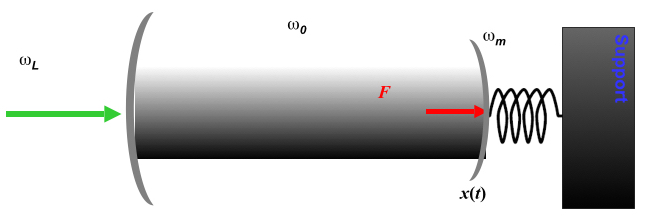
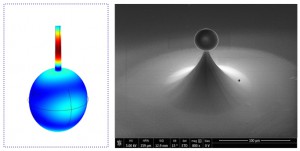
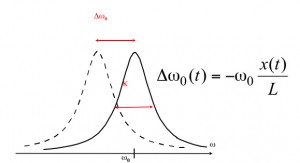

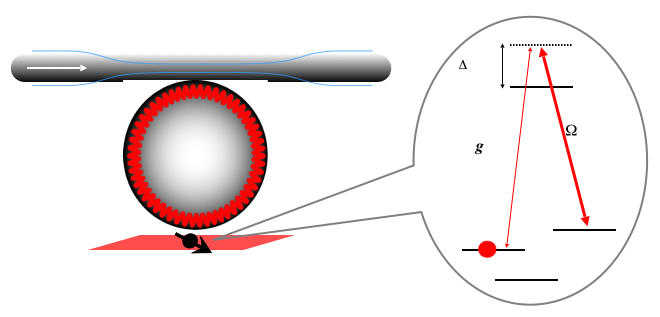
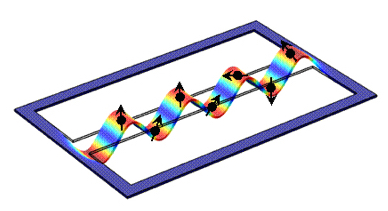
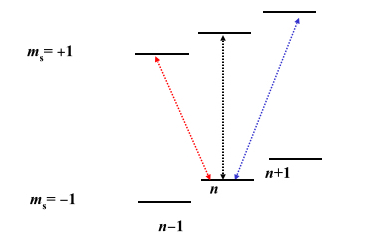
Recent Comments